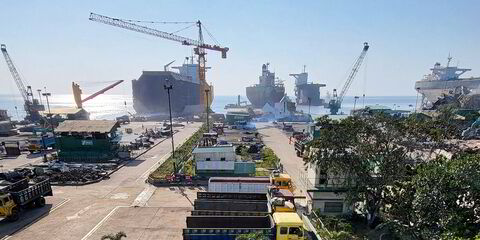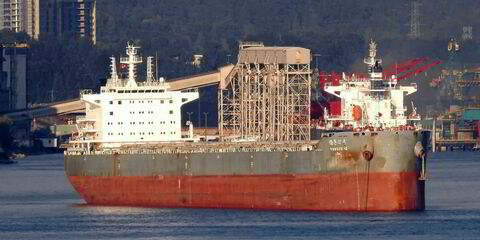Τhe first thing I would invest in is digitalisation. Nobody should be making investment decisions without properly evaluating the facts.
This article is part of a series written by people across shipping in response to this question about how to deploy a hypothetical TradeWinds Sustainable Shipping Fund:
How, where and why would you invest $1bn for the best return in sustainable shipping, as the industry grapples with the need to cut carbon emissions, improve efficiency and keep cargoes moving in a world facing multiple economic and political challenges? The investment will be made now and ideally held for the next seven years to the end of the decade. As an added bonus, give one policy or regulation you would like to implement from 1 January 2023 to benefit shipping?
Why should shipowners wastefully invest in costly dual-fuel main engines when methanol or even LNG bunkering is still challenging? How can they impatiently install bulky wind-assisted propulsion sails when they are still under assessment? Why should they experiment with expensive anti-fouling paints when they should first seek to establish objective means of measuring and evaluating the result of their investments?
Let’s put first things first. Digitalisation is an essential part of the solution towards decarbonisation. There is no room for empirical rules of thumb. Analysing actual vessel-specific data is the only way for radical performance improvement and emissions reduction. All the important decisions above should be assessed by ship-performance systems, based on signals captured from navigational, electronic and mechanical equipment that generate actionable specific advisories.
If Covid has been one of the major catalysts expediting the digital transformation of some aspects of shipping, then it is the introduction of the Carbon Intensity Indicator (CII) that brings turmoil like no other. For the first time, the decisions of charterers fall within the scrutiny of an IMO instrument.
CII represents a compelling example of the type of multi-faceted challenges that shipping will increasingly face in the years ahead. Only digitalisation and state-of-the-art analytics optimising performance at the level of the individual ship is fit to handle such challenges.
Market intelligence suggests that a substantial improvement in a vessel’s CII can be achieved merely by fine-tuning a ship’s speed profile and the RPM of the main engine or by temporarily deactivating unnecessary auxiliary machinery. As a fortunate consequence, considerable costs are saved, increasing operational profitability and competitiveness.
It is only after data-driven analysis that focused and delicate modifications in the machinery can be performed to further increase efficiency.
Such an investment is the silver bullet to comply with rules, boost profitability and secure sustainability, paving the way to the new era of shipping.
Read more
- Owner takes the helm at Metis Cyberspace after CEO steps down
- Greek shipowner Laskaridis to power bulker with methanol fuel cell system
- Machine earning: How digital monitoring can make a difference
- Classification societies strike Greek digital deals at Posidonia
- Green Seas: How digital technology can cut shipping’s carbon today



